How to Break in Boots – 12 Expert Tricks for Tough Boots

Expert Verified By: Trenton Potter, Cobbler & Footwear Expert
Stiffness is the ultimate paradox with a brand-new pair of boots. Sure, one day in the future, they’ll fit like a dream, but for now, the elements you’ll come to love, like the rugged, high-quality, thick leather and the durable sole, can make you dread wearing your soon-to-be-favorite boots.
But never fear—our Editor-in-Chief, Nick, met up with expert cobblers Trenton and Heath from Potter & Sons to put together the ultimate collection of tips and tricks to make the break-in period for tough boots as painless as possible.
Remember, this is a break-in process. It may take some time. Here’s how to make it as easy as a walk in the park.
Key Takeaways:
Our experts, Trenton & Heath Potter, recommend making sure you have the right size, wearing thick socks, putting on moleskin before you get blisters, bringing back up boots when your feet get tired, resting, manually flexing the boot at the flex points, and more.
Our Top Tips for Breaking in Boots Fast
We’ve tested and broken in dozens of boots, made our own, and interviewed expert cordwainers and cobblers to get the best insights into how to break boots in. Here’s what the experts said:
1. Start With the Right Size
We get a lot of people that send in boots, surprisingly, they find that they’re too small and they bought them too small and then they want to have them stretched and that can’t always happen.
Trenton Potter, Cobbler at Potter & Sons
There’s not much you can do about a new pair of boots that’s too small, back-to-front. Some leathers stretch more than others. A thin suede will stretch out more than a super thick work boot leather.
If your toes are cramped or the width of your foot hangs over the footbed, no amount of breaking-in is going to fix a too-small boot. On the other hand, too-big boots are likely to leave you with blisters.
When you’re not sure exactly what size shoe or boot you are, go to your local shoe store and get measured on a Brannock device. While it’s a helpful starting point, not all manufacturers are true-to-size.
If possible, try on boots in person before you buy them, and experiment with a half size larger and smaller than your actual size. If you have to buy online, be sure to read our thorough boot and brand reviews and consider ordering a couple of sizes for a full try-on comparison; read the fine print on return policies, and then send back any pairs that aren’t that perfect Goldilocks fit.
Check out our boot reviews to find out what to look for when trying on many brands and styles.
Further Reading

The Ultimate Guide to How Boots Should Fit (5 Areas to Look At)
I’ve bought an eye-watering number of boots and learned a few things about how to get the best fit.
Learn more →
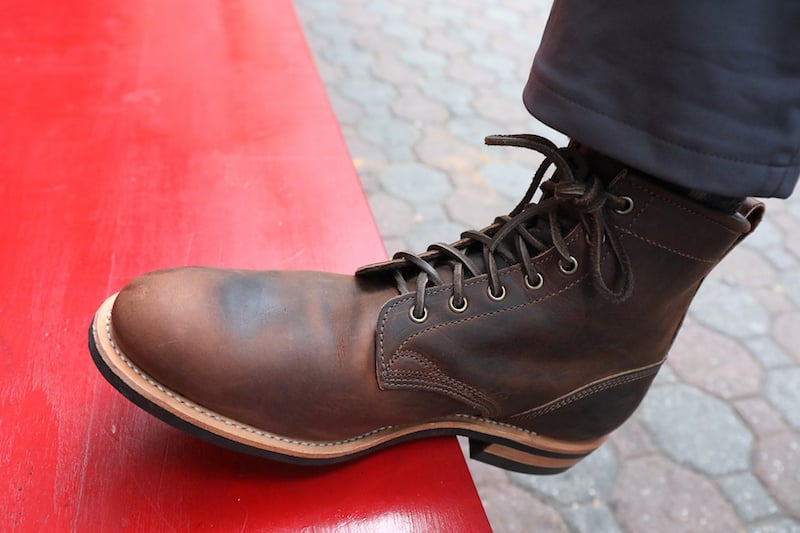
The Dayton Service Boot is one of my all-time favorite boots—but that break in…
2. Wear Thick Socks and Go for a Walk (Inside!)
“Wear them with thick socks because what you’ll find is leather is very porous, and as moisture and heat gets into the leather, it’s going to start to stretch out.”
Heath Potter, Cobbler
Got chunky socks? Great. Start with the thickest sock you have (or two if you can manage it!), and wear your new boots around the house. This will help you figure out if you’ve purchased the right size without getting the shoes dirty, so you can still return them if they’re too snug or too big. This process of adding thicker socks will also begin stretching the leather.
Further Reading
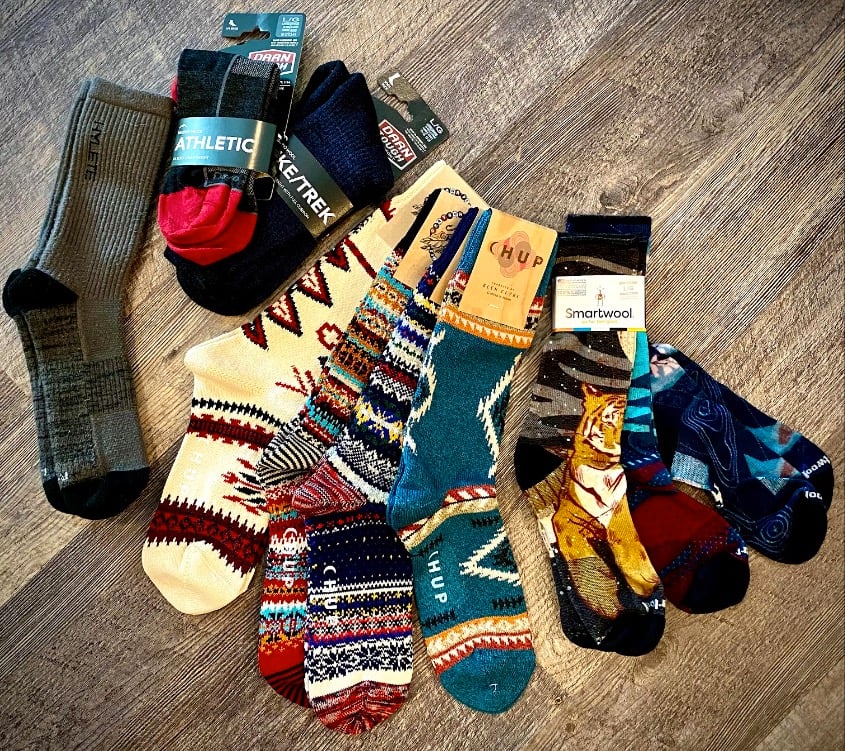
The Best Boot Socks You Can Buy (CHUP vs Smartwool vs Darn Tough)
We’ve tested a ton of different boot socks. Here are our favorites. Learn more →
Out-of-the-box leather is as stiff as it will ever be, and it softens and stretches best with a combination of gentle pressure, heat, and moisture.
A thick pair of socks will mimic some of this process by warming up your feet and pressing on the upper, helping it mold to the shape of your foot. “I’ve actually found that this is one of the best methods for me,” explains Trenton, “whether I have dress shoes or boots. I will often wear a thicker pair of socks when I first get them out of the box, and I’ll wear them around my house throughout the day for a couple of days.”
3. Wear Moleskin When You Get Hot Spots
Once you’ve worn your new boots for a few hours, you’ll start to feel hot spots where the boot rubs into your feet. It’ll be pretty clear where blisters are starting to form.
You don’t have to be a martyr to them; just note those tender spots and slap on a bit of moleskin (such as Dr. Scholl’s brand) or bandage (such as a classic Band-Aid) the first few times you wear your new boots out in the world. Large, fabric Band-Aids work best for this, as the plastic ones tend to get slippery and don’t stay in place as well.
Our experts recommend moleskin padding to help prevent blisters when breaking in a new pair of boots.
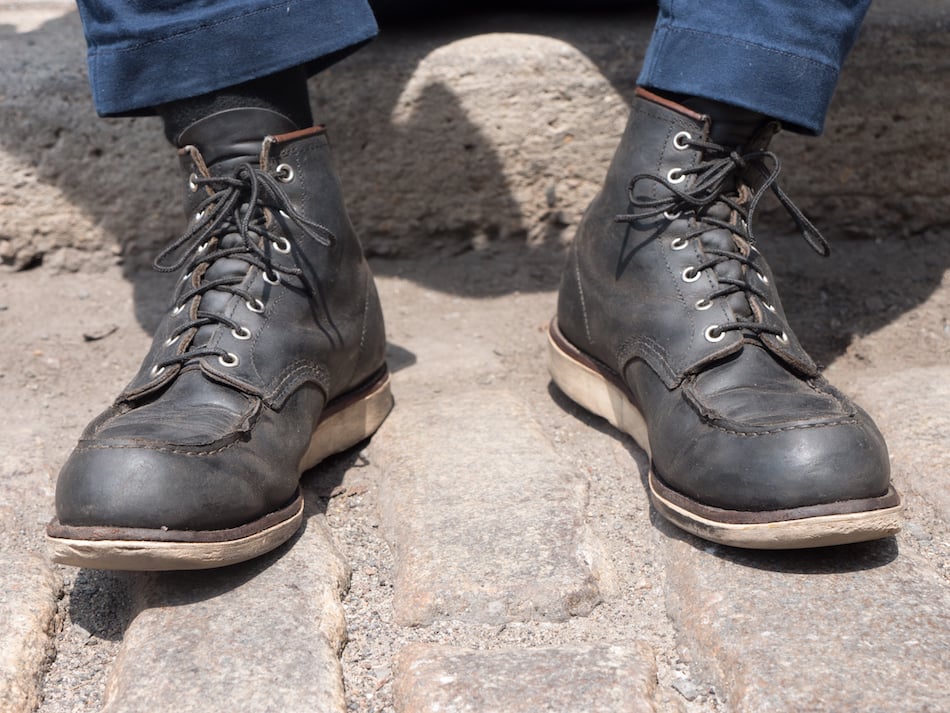
My first pair of boots, the Red Wing Moc Toe. Breaking them in was not fun.
4. Bring Extra Shoes With You
Another thing that you can do is bring an old pair of boots or sneakers with you when you break in your new boots.
Trent Potter, Cobbler
Don’t commit to a 12-hour day in your new boots; plan ahead if you’re going to be trying to break them in for extended periods during the day. No matter how comfortable they may be in your house, your arches will need a break after a few hours.
“It’s best to wear your new pair earlier in the morning before your feet really start to swell,” Trenton says, “And that way you can wear them around. And before it starts to hurt too badly, you can take those off, set them aside, and then put on your, you know, worn in sneakers or old boots.”
[Best: 10 Best Boots for Wide Feet]
5. Give the Boot Break-In Process a Break
As tempting as it may be, don’t wear your new boots many days in a row. The moisture from your foot takes more than a night to evaporate fully, and giving the leather a day or two in between wears will not only give your feet a much-needed rest, but will also give the boots time to dry fully before you wear them again for a few hours.
As a bonus, using this method throughout the lifetime of your boots will keep the foot-stink to a minimum. We recommend using shoe trees between wears to help draw out the moisture so the boots retain their shape. I get that this might be tough if you need to break in new work boots; it’s not like you can just take a day off of work to break in a new pair of boots.
[Learn more: 3 Reasons Your Boots Need Shoe Trees.]
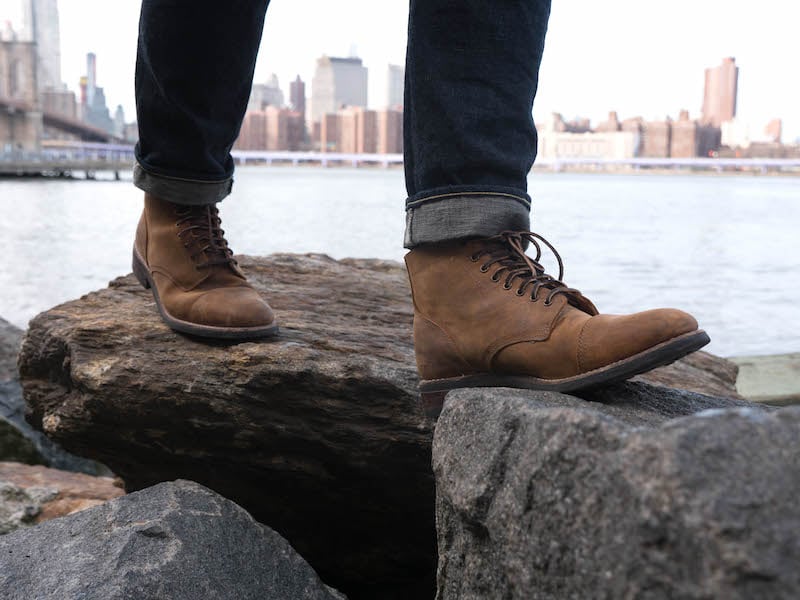
Breaking in the Thursday Vanguard boot with a walk by the water.
6. Work the Bend with Your Hands or Standing
Work those areas where the boots crease with your hands. It’s going to speed it up a lot faster, rather than having to wear it out and trying to bend it by walking. Work that crease with your hand just while you’re watching tv.
There are two main places where boots bend: at the ankle, and just below the toes, at the ball of the foot. Those are the places that the leather will flex as you take a step, and need some work during the initial break-in.
When you’ve worn your new boots for a while, just after you take them off, hold the boot in your hands and work the leather, bending the sole back and forth at the crease and crushing the leather fibers around the heel and ankle. You’re just speeding up the process that would naturally happen as you walk around in them. “And don’t lace it up real tight,” Heath recommends.
“Leave [the boot] a little bit looser. So you’re not putting all the pressure on it, but you’ll still be able to get a little bit of flex in there.”
Heath Potter, Cobbler
7. Scuff Up the Heels
Heel slippage is a super common problem (especially with boots that have a smooth leather lining) and as we know, friction causes blisters. Over time, wearing the boots creates a “heel pocket” in the inner heel area, which is why blisters are more common in the early days of breaking in a pair of boots and subside over time.
The next thing you can do is scuff up the heels. Now, where’s the one place that so many of us get blisters when we’re wearing our shoes? It’s always in the heel area. And the reason that that happens is because so many of the shoes we wear are lined on the inside.
Trenton Potter, Cobbler
You can speed the development of the heel pocket by taking a piece of fine-grain sandpaper and lightly sanding the inside of the heel area. You might be cringing at the thought of damaging the leather, but you don’t need to go hard; just scuff it a bit so that the boot can grip your sock a little better and reduce the friction.
8. Treat Your Leather
This method is most useful if the leather upper feels too tight: adding moisture in the form of a leather softener, like Tenderly Leather Softener, or a conditioner like Venetian Shoe Cream, can increase the give of the fibers. Remember: moisture helps leather stretch. Just be careful not to over-condition, which can make the material floppy. A little conditioner goes a long way.
[Related: The 5 Best Boot Conditioners On the Market]
9. Use a Boot Stretcher to Stretch Them Out
If they’re not broken in put a stretcher in them or take them to a place to be stretched.
Trenton Potter, Cobbler
If you’ve got stiff leather, a shoe stretcher is the way to go. Shoe or boot stretchers look a bit like a cedar shoe tree, except with a crank that you can use to increase the width of the wooden foot.
These are best used in combination with a conditioner or leather softener to break in your new boots. “We usually tell our customers three to five days because you don’t want to rush it.” says Trenton, “The fibers of the leather have to really stretch out. So the longer you can leave it on, the more it gives those fibers time to actually stretch out and stay there.”
Also be careful and go slowly, Heath warns, “if you stick them in and you just start cranking full blast, then a lot of times it’s too much pressure for the leather and also for the stitches on the welt.”
10. Try a Different Lacing Combo
If you’re encountering tightness around your arch or ankles and want to give your foot a little more room to flex, skip some of the eyelets when you lace up your boots. After all, the point of the break-in is to stretch the leather, not the laces. This can be particularly helpful when you’ve got a pair of boots with a gusseted tongue, which adds extra bulk to break in.
11. Take Your Pair of Boots to a Professional
If you really can’t stand the idea of breaking in your own boots, then a cobbler can help. They have specialized stretching tools that can expand just the problem areas on a pair of boots, or add padding to an insole or arch. A quick Google search for “shoe repair near me” or “cobbler near me” will turn one up. Just keep in mind that you might need to leave your new boots with them for a few days.

12. Don’t Rush It
A final word of warning: there are a lot of terrible DIY tips on the internet for “breaking in boots fast!” Don’t buy it. Wearing your boots through moderate to heavy discomfort can cause problems for both your feet and your shoes. There’s a fine line when you break in new boots; you don’t want accidentally to damage them, or cause yourself a lot of pain or serious blisters that will take weeks to heal.
How Not to Break in Boots
Now: what not to do to properly break in a pair of boots. Many articles on the internet that claim to have a super-quick or easy fix for too-tight boots are based on old-wives’ tales perpetuated by recycling content from old message boards, and most of those methods can hurt your feet or damage your boots. No matter how badly you want to prevent blisters, get a comfortable fit, and break in your boots, avoid doing the below.
Don’t fill your boots with water and let them dry.
This method is sometimes recommended for work boots and hiking boots, often perpetuated by military types for quickly breaking in boots. That might work if you’re in the military, but wearing wet boots has tons of downsides for your foot and boot health.
Too much water can cause the leather and other materials (like cork midsoles!) of heritage boots to rot, warp, or shrink. Work boots, military boots, and hiking boots are built differently from heritage boots; they have more synthetic materials like nylon, Poron, and EVA that are more durable if they get wet. These boots dry quicker and won’t rot as easily. Also, there’s less leather, or the leather has been treated to prevent it from drying out and cracking. If you need to break in a pair of work boots quickly, and they are mostly synthetic, just use the same advice we gave above.
Don’t wear wet socks around
When it comes to the break in process, you want to break in new boots, not your feet. Wearing wet socks can cause blisters. It can also cause your boots to get really stinky. As you wear wet socks and your boots heat up, bacteria will grow and bring with it odor and rot. When you leave your boots to dry overnight, you’re basically creating the perfect environment for mold and other microorganisms to invade your boots. These are really tough to get out, and you might be stuck with stinky boots.
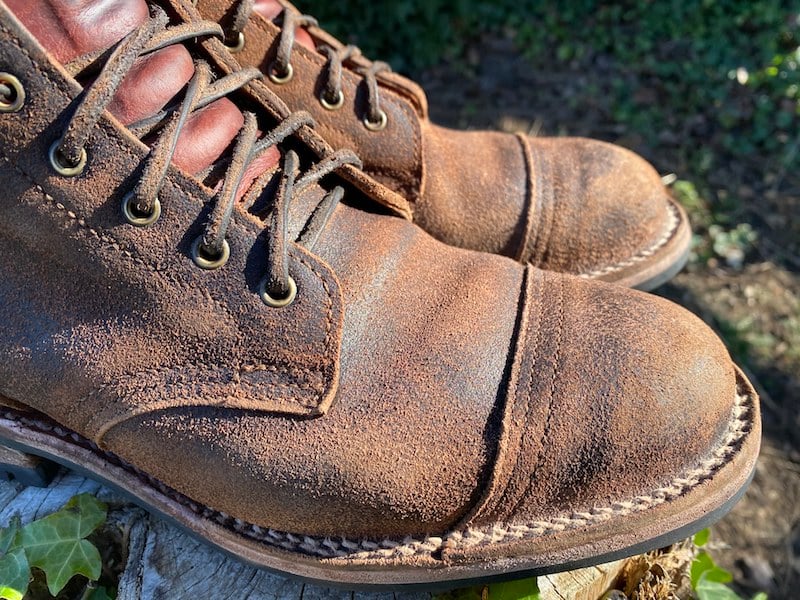
Don’t blast your boots with a hair dryer.
This is one of the worst ways to break in new boots. New boots have a lot of oil in the leather to soften it and keep it from getting brittle. Boots basically come with conditioner already applied. Heat will remove these oils from the leather boot material. That’s why a lot of these so-called tips recommend adding more conditioner to the leather after you blow dry them.
I’ve seen it touted as a way to stretch, shrink and break in boots and leather shoes. This is one of the worst ways to break in brand new boots.
This method also includes get your boots wet to some degree, so you have all of the problems of soaking the boots combined with the additional problems of wet boots. The leather won’t stretch much, you’ll waste leather conditioner, your boots don’t break in as much as wearing them or bending them, and you may cause excessive damage to your boots.
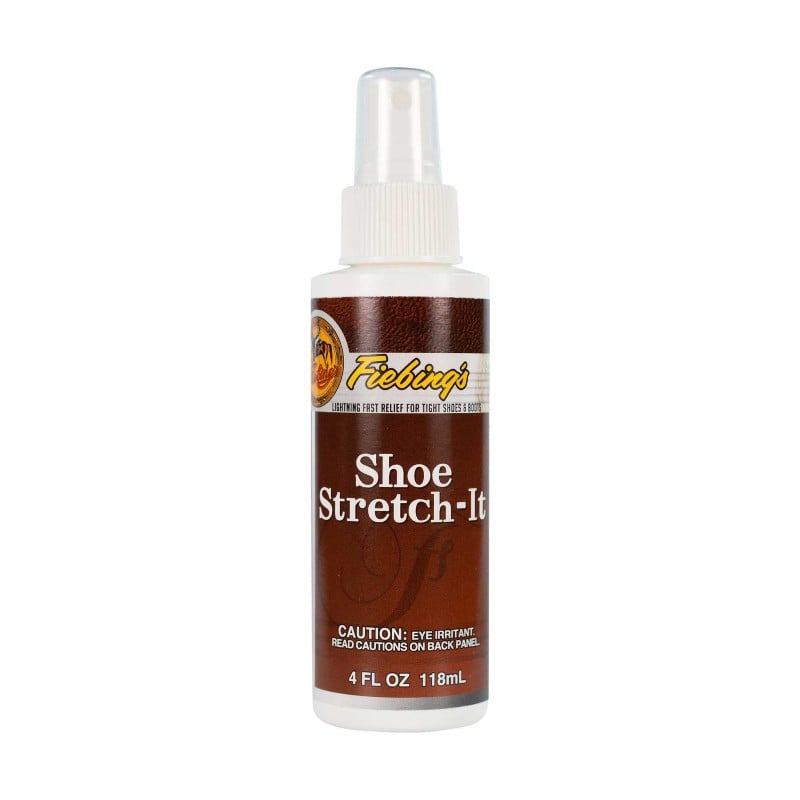
Don’t overdo it with rubbing alcohol and water.
Spraying your boots with alcohol and water to stretch, widen, or soften up the leather in areas where the boot or shoe is tight is something cobblers do. You may have wondered what’s in boot stretching spray; Fiebing even sells shoe stretching spray that is just water and alcohol, but for breaking in leather shoes, just wearing them regularly and bending them is a much better method. If you have a problematic spot where the leather is too stiff like on the ankle, a good cobbler can soften the leather in that spot.
However, you want to avoid the boot stretching spray or straight up alcohol and water spray method because it also strips out the oils from your new boots. If that happens, you need to use leather conditioner, which can be expensive and tedious to apply, and can cause the dye in the leather to fade. That may not be too important for a pair of work boots or hiking boots, but you definitely don’t want to damage a pair of $400 dress boots.
Alcohol will eat the dyes out of your boots. It will increase the brittleness of the leather, which can lead quickly to cracking and other damage. For this reason, we don’t recommend boot stretching spray to break in boots.
Wrapping Up
The internet is full of terrible ideas to quickly break in boots(although all of our ideas are good, vetted, and fact-informed), so skip shortcuts and use your common sense. The break in period can be tolerated without significant pain or damage as long as you follow our tips above and wear your boots regularly to power through it.
Go slow, pay attention, and remember that breaking in quality boots is a process that takes a couple of weeks, tops—hardly a trade-off when you think about the years of comfortable wear you’ll get out of your favorite boots after it’s done.
[Related: My list of The Best Boots for Men]
FAQs: How to Break In Boots
How do you break in a boot fast?
You can speed up the process by wearing thick socks, bending them with your hands at the breaking point, treating your leather with a leather conditioner, or taking them to a professional cobbler.
How long do boots take to break in?
This depends on the type of materials boots like Thursday Boot Company’s Captain are comfortable out of the box. Boots made with thicker, more durable materials like Red Wing’s Iron Ranger can take weeks to break in.
How do you break in boots so you don't get blisters?
Make sure they fit properly, wear them for a short period of time, and bring an extra pair of shoes with you so you can change into more comfortable shoes if you feel hot spots.
How to break in Thursday Boots?
Thursday boots are designed to be comfortable out of the box. If you feel that you need to break them in, wear them for 15-20 minutes per day or until your feet feel discomfort. Tip: bring an extra pair of shoes with you in case your feet hurt. You can also buy a shoe tree and condition your boots to break them in faster.


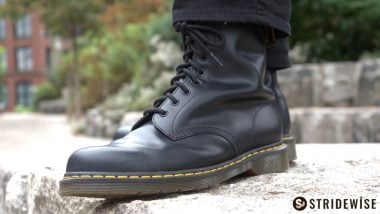





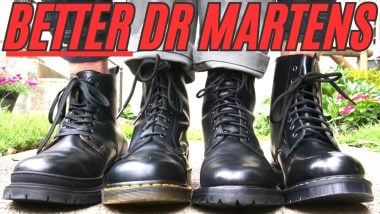

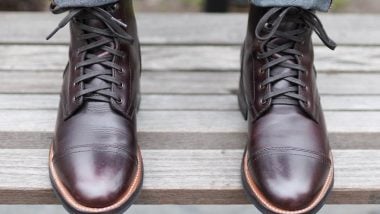
Enjoyed reading up on breaking in boots. Been almost 20 years since I had a new pair. Just got a pair of Tecovas for Christmas.
Still sliding around on the carpet. Haven’t taken them outside to scuff the soles.
Great! Good luck with them. Hey, I just did a video version of this article with Trenton & Heath, check it out! https://www.youtube.com/watch?v=iKzN872g0gM
I usually ask the question, ‘why do military boots hurt my feet?’ and this post is the best answer. Thanks for sharing.
Awesome Dalton! So glad it helped!
Steps to break in new boots correctly. Make sure you are the right size. Wear thick, comfortable socks. burglary in the house. Move the boots from side to side. Fractures on the outside. Use a leather conditioner. Put a last in the boots. Wear your new boots every other day until they are fully broken in. Use boot trees.
Burglary in the house??